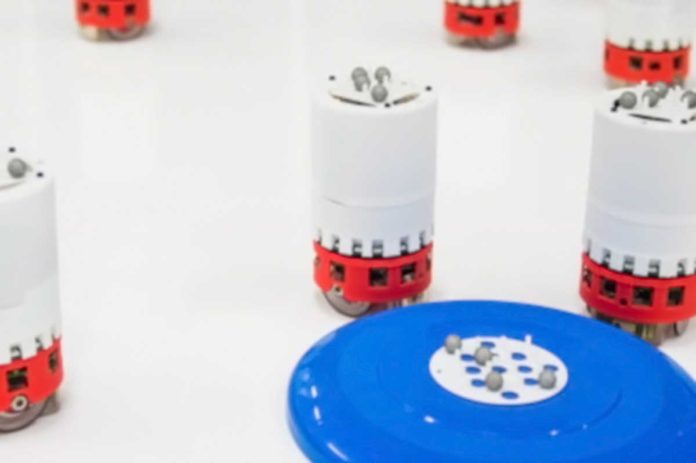Designing the individual robot rules that give rise to desired emergent swarm behaviors is difficult.
Until now, artificial evolution has ordinarily been kept running on the computer, which is external to the swarm, with the best strategy then replicated to the robots. However, this methodology is constraining as it requires external infrastructure and a research facility setting.
In new research by the University of Bristol and the University of the West of England (UWE), scientists used artificial evolution to enable the robots to learn understandable swarm behaviors naturally.
Scientists used a custom-made swarm of robots with high-processing power embedded within the swarm. They then identified the appropriate rule to give rise to desired swarm behaviors. This could prompt robotic swarms which can continuously and freely adjust in the wild, to meet the conditions and tasks that need to be done. By making the advanced controllers understandable to humans, the controllers can likewise be queried, clarified, and improved.
Lead author, Simon Jones, from the University of Bristol’s Robotics Lab said: “Human-understandable controllers allow us to analyze and verify automatic designs, to ensure safety for deployment in real-world applications.”
Getting inspired by the recent advances in high-performance mobile computing, to build a swarm of robots inspired by those in nature. Their ‘Teraflop swarm’ is capable of running the computationally intensive automatic design process entirely within the swarm, freeing it from the constraint of off-line resources.
The swarm reaches at a high level of performance inside only 15 minutes, a lot quicker than previous embodied evolution methods, and with no dependence on external infrastructure.
Dr. Hauert, Senior Lecturer in Robotics in the Department of Engineering Mathematics and Bristol Robotics Laboratory (BRL), said: “This is the first step towards robot swarms that automatically discover suitable swarm strategies in the wild.”
“The next step will be to get these robot swarms out of the lab and demonstrate our proposed approach in real-world applications.”
This new advance published today [Friday 23 August] in Advanced Intelligent Systems.
